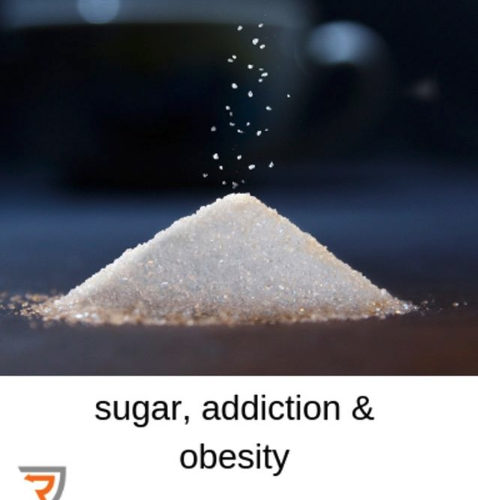Sugar addiction, especially glucose, leads to obesity because of how it is metabolized. Sucrose (table sugar) is a disaccharide made of 50% fructose and 50% glucose. Sucrose is metabolized primarily in the small intestine, releasing equal parts glucose and fructose. Glucose causes insulin release and is rapidly cleared from the bloodstream by insulin-dependent channels. Fructose is independent of insulin and is rapidly taken up by the liver by a first-pass effect and is preferentially stored as fat.
Further increasing obesity risks, glucose and fructose have different effects on the addiction centers in the brain. Although glucose does not directly activate the brain’s reward center, fructose does produce activation in the brain’s “reward circuit,” and increases the desire for food.
American College of Neuropsychopharmacology. “Fructose and glucose: Brain reward circuits respond differently to two kinds of sugar.” ScienceDaily. ScienceDaily, 10 December 2014. www.sciencedaily.com/releases/2014/12/141210080734.htm






